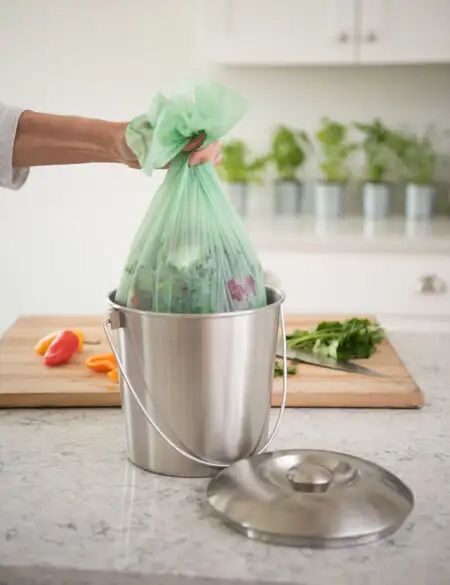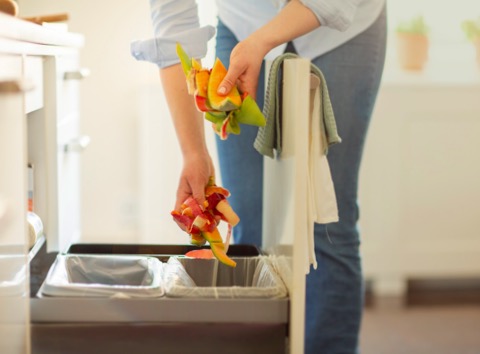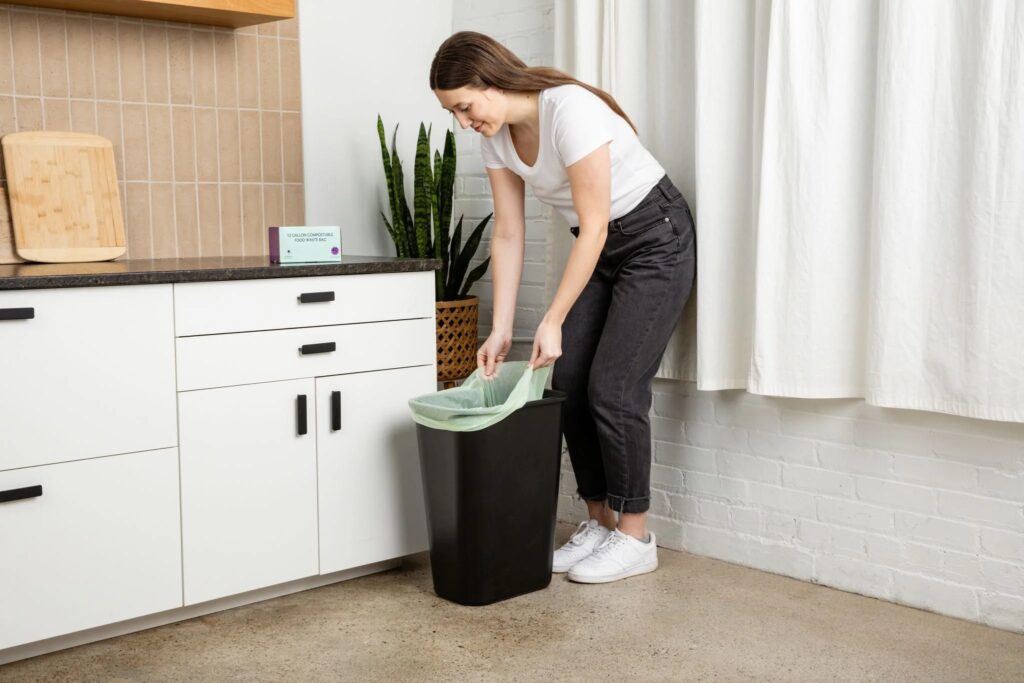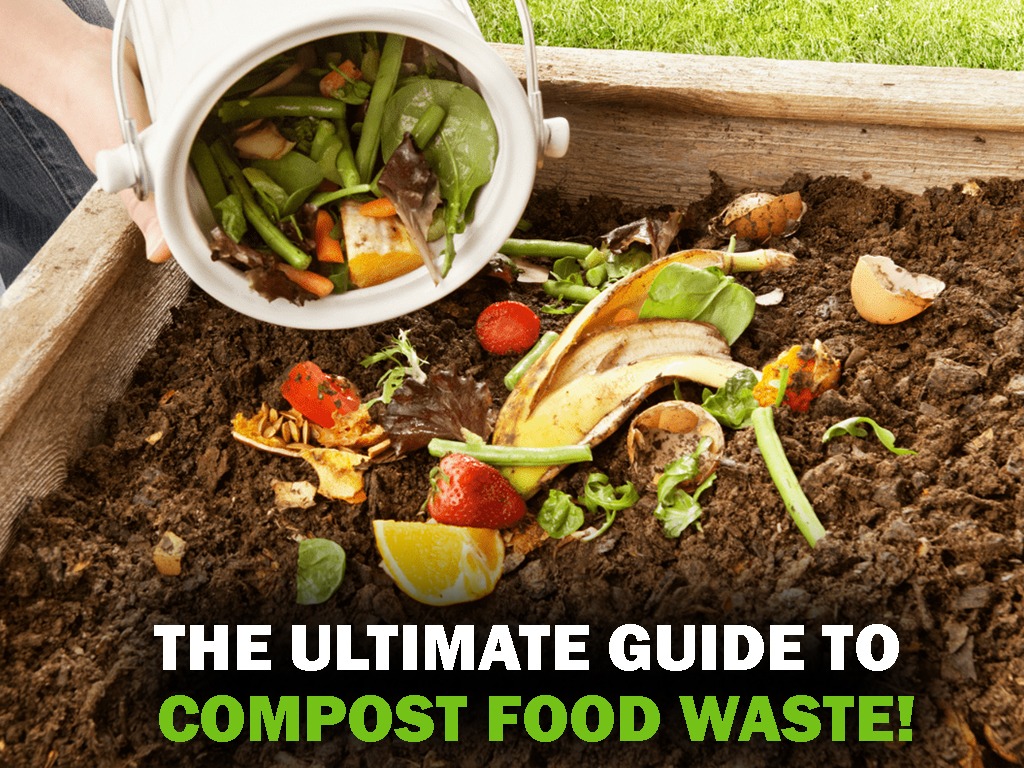Why Choose Compostable Kitchen Waste Bags?
In today’s eco-conscious world, more households are making the switch to compostable kitchen waste bags. These innovative solutions offer a perfect balance between convenience and environmental responsibility, making them an essential tool for sustainable living.
Key Benefits of Using Compostable Kitchen Bags
- Environmental Impact
- Completely breaks down into natural elements
- No microplastic residue
- Reduces landfill waste
- Lower carbon footprint compared to traditional plastic bags
- Practical Advantages
- Strong and leak-resistant
- Effectively contains odors
- Easy to handle and tie
- Compatible with most kitchen countertop bins

How to Choose the Right Kitchen Waste Bags
Certification Standards to Look For
When selecting compostable kitchen waste bags, always check for these important certifications:
- ASTM D6400 certification
- BPI (Biodegradable Products Institute) certification
- EN 13432 European standard
- Local composting facility certifications
Size and Capacity Considerations
Choose the right size based on your needs:
| Bag Size | Ideal Use Case | Replacement Frequency |
|---|---|---|
| 2-3 Gallon | Small households | Every 2-3 days |
| 3-5 Gallon | Medium households | Every 3-4 days |
| 6+ Gallon | Large families | Every 4-5 days |
Best Practices for Using Kitchen Waste Bags
Proper Usage Tips
- Loading the Bag
- Don’t overfill (keep contents below 75% capacity)
- Avoid sharp items that might pierce the bag
- Layer food scraps with paper towels to absorb excess moisture
- Storage Guidelines
- Keep bags in a cool, dry place
- Avoid direct sunlight
- Use within one year of purchase
- Store away from heat sources
What to Put in Your Kitchen Waste Bag
✅ Acceptable Items:
- Fruit and vegetable scraps
- Coffee grounds and filters
- Tea bags
- Eggshells
- Bread and grains
- Plant trimmings
❌ Items to Avoid:
- Meat and dairy products
- Oils and greases
- Chemical products
- Non-compostable materials
- Hot liquids
Maintaining Your Kitchen Compost System
Daily Maintenance
- Monitor Moisture Levels
- Keep contents moderately moist
- Add dry materials if too wet
- Ensure proper drainage
- Odor Control
- Change bags regularly
- Clean bin between bag changes
- Use a bin with proper ventilation
Troubleshooting Common Issues
| Problem | Solution |
|---|---|
| Bag breaking | Don’t overload; check for sharp items |
| Odors | More frequent changes; add paper products |
| Leakage | Double-check bag placement; avoid excess liquids |
| Fruit flies | Seal food scraps; change bags more often |

Cost Considerations and Value
Price Comparison
While compostable bags may cost more initially, consider these factors:
- Environmental cost savings
- Reduced waste management fees
- Potential community composting benefits
- Long-term environmental impact
Where to Buy
- Local Options
- Natural food stores
- Home improvement centers
- Garden supply shops
- Online Sources
- Eco-friendly retailers
- Bulk suppliers
- Manufacturer direct
Environmental Impact and Benefits
Positive Environmental Effects
- Reduces plastic pollution
- Supports circular economy
- Lowers greenhouse gas emissions
- Creates nutrient-rich compost
Community Benefits
- Supports local composting programs
- Reduces municipal waste costs
- Promotes environmental awareness
- Builds sustainable communities

FAQ Section
Q: How long do compostable kitchen bags take to decompose? A: Under proper composting conditions, bags typically break down within 180 days.
Q: Can I put hot food in compostable bags? A: No, allow food to cool first to prevent bag degradation.
Q: Are these bags as strong as regular plastic bags? A: Yes, when used properly, they offer comparable strength for kitchen waste.
Q: Do I need a special bin for these bags? A: No, they work with standard kitchen compost bins, but ventilated bins are recommended.
Conclusion
Compostable kitchen waste bags represent a significant step toward sustainable living. By following these guidelines and best practices, you can maximize their effectiveness while minimizing your environmental impact.

